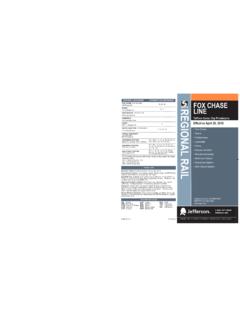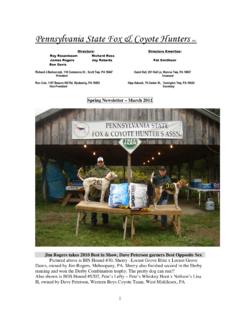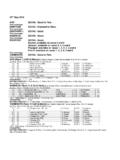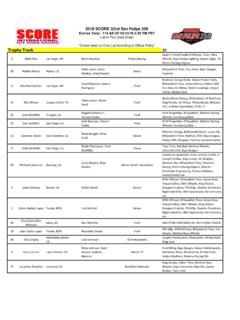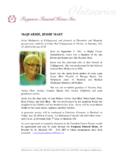Transcription of 4AK-01PO: The Care of Dogs and Puppies - …
1 4AK-0lPO. The care of Dogs and Puppies This educational material has been prepared for 4-H use by the National 4-H Dog care & Training Development Committee, composed of representatives of the Cooperative Extension Service of the Department of Agriculture and State Land Grant Universities in cooperation with the National 4-H Council. Dr. Dennis A. Hartman, Professor of Dairy Science, Virginia Tech, served as principal author. Special thanks are extended to Purina Dog Foods Group, Ralston Purina Company, for financial and technical assistance. This material is published by the National 4-H. Council, 7100 Connecticut Avenue, Chevy Chase, Md. 20815. The author wishes to acknowledge the assistance of the following 4-H members and adults who posed their dogs so patiently, and to Mrs. Jane Tutton for her drawings and consultation: Douglas Hartman, Mark Hartman, Rudi Schwarz and Duane Bray.
2 Programs and educational materials of National 4-H Council; Extension Service, United States Department of Agriculture; and all Cooperative Extension Services of the State Land-Grant Universities are available to all persons regardless of race, color, sex, age, religion, national origin or handicap. All are equal opportunity employers. 2 50-10-77/50-5-78/50-8-78/50-2-79/50-3-80 Table of Contents Page Breeds of Dogs .. 3. Parts of the Dog .. 6. Glossary of Terms .. 6. The Dog Owner's Responsibilities .. 7. Selecting the Right Dog ..9. Preparing for Your Puppy .. 13. Feeding the Mature Dog .. 15. Breeding .. 20. care of the Bitch and Puppies .. 21. Feeding of the Bitch and Puppies .. 23. Internal Parasites .. 25. Dog Diseases Which May Be Transmitted to Humans .. 26. External Parasites.
3 27. Diseases Preventable by Vaccination .. 28. First Aid For Your Dog .. 29. Building a Suitable Dog House .. 30. Primitive hunters brought wolf Puppies home and tamed them. A species of wolves was bred that was unable to The companionship between man and dog has been strong compete with wolves in the wild and they thus haunted for many years with proof given in the earliest parts of the man's campfires and lived on what food was available. The Bible, Matthew 15:27 .. but even the dogs feed on the wolf is pack-oriented and thus cooperated with man and crumbs which fall from the master's table. Egyptians recognized him as the pack leader. The early domesticated undoubtedly loved their dogs as pictures of hunting scenes dogs, being animals of the chase by inheritance from the with dogs were found in the tomb of Amten, in Egypt, wolf, joined the ancient hunters in the excitement of the dating back to the fourth dynasty, or between 2900 chase.
4 The hunter recognized the value of these animals in and 2751 These dogs were of the sight-hound type. obtaining food, and a partnership was gradually formed. Prehistoric man also played an important role in the Through the evolution of man came many changes in the development of the dog. H o w o r w h e n t h e d o g w a s dog. Men selected for different traits and developed dogs domesticated is not known. The following theory is for different purposes. Thus the many different breeds of offered. today can be traced back to prehistoric times. 3. Recall, for a moment, some of these differences. Some fight Beagle to the large Bloodhound, both of which trail by silently, some with great snarling, some slash and tear, while scent with diligence and patience. others grab and hang on. Some dogs test the wind for scent, Afghan Hound Dachshund (longhaired).
5 Basenji Dachshund (wirehaired). while others run by sight and still others trail by scent on Basset Hound American Foxhound the ground. Certain breeds have a strong sense of protecting Beagle (15") English Foxhound property and life, while others have a stronger commitment Beagle (13") Greyhound Black and Tan Coonhound Harrier of gaining a friend. Bloodhound lbizan Hound The American Kennel Club is the largest of the dog recording Borzoi Irish Wolfhound organizations in the United States. At this time over 125 Dachshund (miniature) Norwegian Elkhound Dachshund (standard) Otter Hound breeds are recognized. More breeds will likely be recognized Dachshund (smooth) Rhodesian Ridgeback in the future. These breeds have been placed in six groups Saluki according to their purpose. They are: sporting dogs, hounds, Scottish Deerhound Whippet working dogs, terriers, toys and non-sporting.
6 (The United Kennel Club is another registry for dogs which compete in UKC field trials, foxhound trials, night hunts and water races around the United States.). Group 1: Sporting Dogs The sporting breeds include the pointers, setters, retrievers and spaniels. The pointers and setters are hunters that cover the ground with great speed and freeze like a statue at the Figure 2-The Basset Hound scent of game birds. The retrievers are expert swimmers and excel at retrieving game, either in the field or water. Briars do not grow too thick to keep the hard working spaniel Group III: The Working Breeds from flushing its game. The working breeds were developed for serving man by Pointer Gordon Setter drawing sleds and carts, d r i v i n g c a t t l e t o m a r k e t a n d German Shorthaired Pointer Irish Setter protecting property.
7 More recently they have been de- German Wirehaired Pointer American Water Spaniel Chesapeake Bay Retriever Brittany Spaniel veloped for guiding the blind and detecting bombs and Curly-Coated Retriever Clumber Spaniel narcotics. Flat-Coated Retriever Cocker Spaniel Akita German Shepherd dog Golden Retriever English Cocker Spaniel Alaskan Malamute Giant Schnauzer Labrador Retriever English Springer Spaniel Australian Cattle Dog Great Dane English Setter Field Spaniel Bearded Collie Great Pyrenees Belgian Malinois Komondor Belgian Sheepdog Kuvasz Belgian Tervuren Mastiff Bernese Mountain dog Newfoundland Bouvier des Flandres Old English Sheepdog Boxer Puli Briard Rottweiler Bullmastiff St. Bernard (longhair). Collie (rough) St. Bernard (shorthair). Collie (smooth) Samoyed Doberman Pinscher Shetland Sheepdog Siberian Husky Schnauzer (standard).
8 Cardigan Welsh Corgi Pembroke Welsh Corgi Figure 1 -The American Cocker Spaniel Group II: Hounds The hound breeds include those with long legs developed for speed, endurance and keen vision known as coursing hounds. The tracking hounds include the rather small Figure 3-The Rough Collie 4. Group IV: The Terrier Breeds The terrier breeds are alert, bold dogs named after the Latin word, t e r r a , meaning earth, into which they follow their quarry. The terrier was developed to dig out the small animals chased underground by the tracking hounds. Many are small of size and can burrow through tunnels with ease. They are ferocious fighters once they corner their quarry. Airedale Terrier Kerry Blue Terrier American Staffordshire Terrier Lakeland Terrier Australian Terrier Manchester Terrier (standard and toy).
9 Bedlington Terrier Miniature Schnauzer Border Terrier Norfolk Terrier (drop ears). Bull Terrier (white) Norwich Terrier (prick ears). Bull Terrier (colored) Scottish Terrier Figure 5- The Yorkshire Terrier Cairn Terrier Sealyham Terrier Dandie Dinmount Terrier Skye Terrier Fox Terrier (wirehair) Soft Coated Wheaten Terrier Group VI: The Non-Sporting Breeds Fox Terrier (smooth) Staffordshire Bull Terrier Irish Terrier Welsh Terrier The non-sporting breeds vary a great deal in their historical West Highland White Terrier and physical characteristics. They also vary greatly in disposition and size. Although they were developed to perform certain purposes, today they serve chiefly as pets. Bichon Frise Keeshond Boston Terrier Lhasa Apso Bulldog Poodle (standard). Chow Chow Poodle (miniature).
10 Dalmatian Schipperke French Bulldog Tibetan Terrier Figure 4- The Fox Terrier (wire). Group V: The Toy Breeds The toy breeds are the smallest, ranging in size from 4-16. pounds. They were developed for the purpose of pleasure and companionship to their master or mistress. Many of the breeds were prized by the royalty of ancient times. Although they are small in size, they are plucky and long-lived. Miscellaneous Breeds Some miscellaneous breeds are granted ILP (Indefinite Affenpinscher Maltese Listing Privileges) and registered by the American Kennel Brussels Griffon Miniature Pinscher Papillon Club but not included in regular groups (although probable Chihuahua (smooth). Chihuahua (longhair) Pekingese acceptance is the rule). They may compete in shows and English Toy Spaniel (Blenheim) Pomeranian obedience trials but are not eligible for points toward an English Toy Spaniel (Prince Charles) Poodle (toy).
